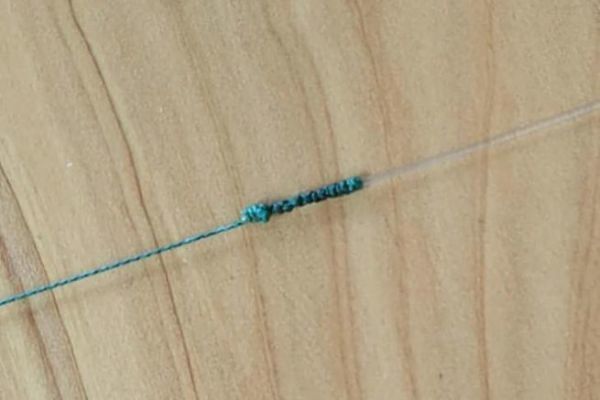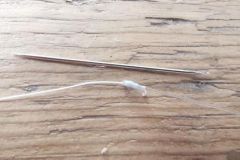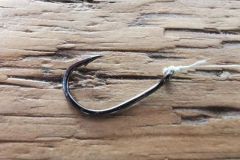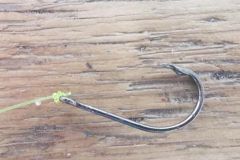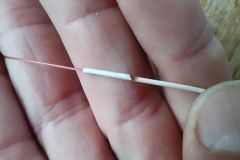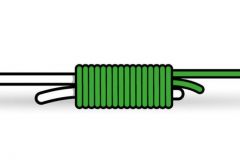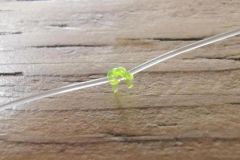A node for easy connection
The FG node principle is to make a sock with its braid around its fluorocarbon strand. As the latter is not folded on itself or has no knots (like the Albright or the Peixet ), it's much thinner, making its passage through the rod rings very smooth. What's more, it's very strong and self-tightening, so there's no need to worry about how it'll hold up.
The Sébile knot (named after its inventor Patrick Sébile) looks exactly the same, but the way it's made is different and, in my opinion, easier.
For greater visibility in our tutorial, the knot is made with 35/100 braid and 80/100 fluorocarbon.
To make this knot as easy as possible, try to keep your braid taut until step 5.
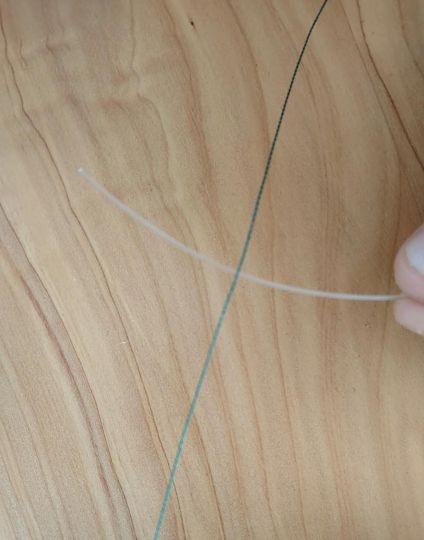
- Step 1: Pass the braid over your fluorocarbon strand, perpendicular to it.

- Step 2: Twist the free strand of your braid around the fluorocarbon.
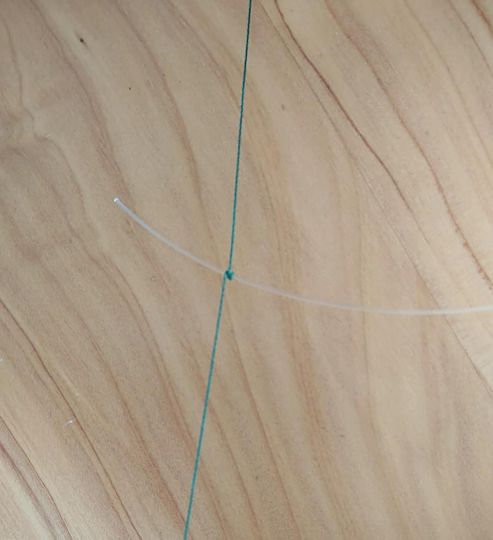
- Step 3: With the braid strand "reel side", make a turn around the fluorocarbon strand. In the opposite direction to the previous one.
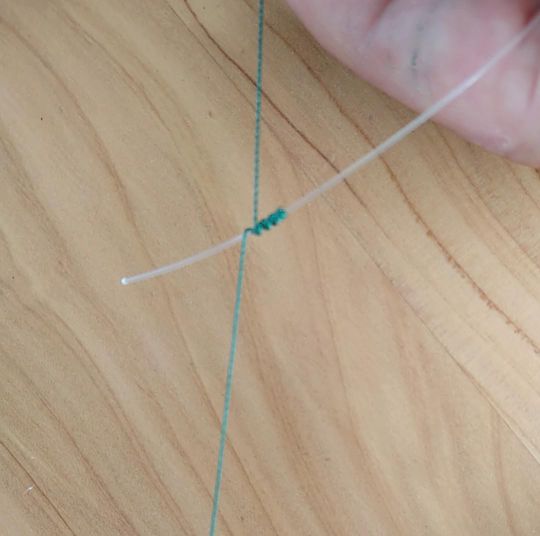
- Step 4: Make another turn with the free strand, then one with the other strand, and so on... Keeping your braid as taut as possible so that the turns don't loosen. Gradually your knot moves up onto the free fluorocarbon strand.
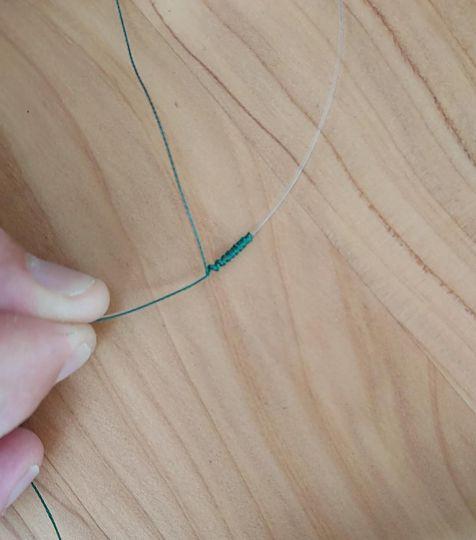
- Step 5: Repeat until you have 20-25 turns. Then align the main braid strand with the free fluorocarbon strand and hold them together between 2 fingers.

- Step 6: Make a key. To do this, pass the braid over your fluorocarbon strand, turn around the fluoro and pass it back through the loop that has formed. At this point, tighten the knot (after moistening it) by pulling alternately on the main braid strand and the free strand.
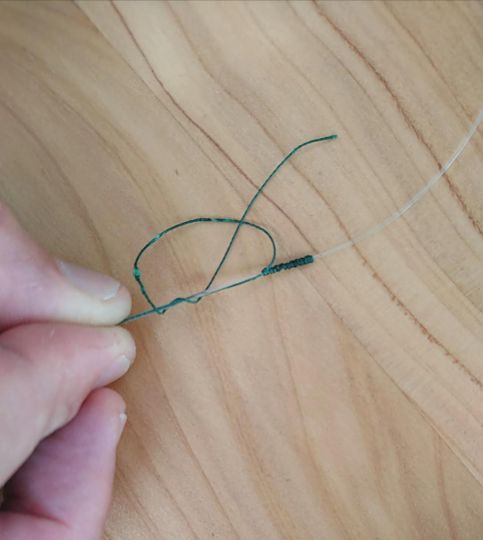
- Step 7: Make a double key and tighten (pass twice through the loop).
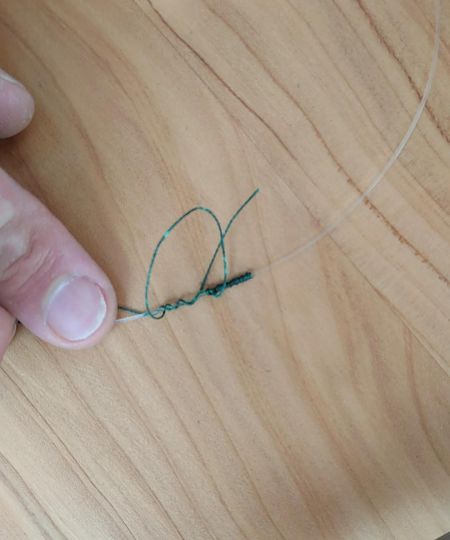
- Step 8: Finally, make a triple key and tighten once more (pass through the loop three times).
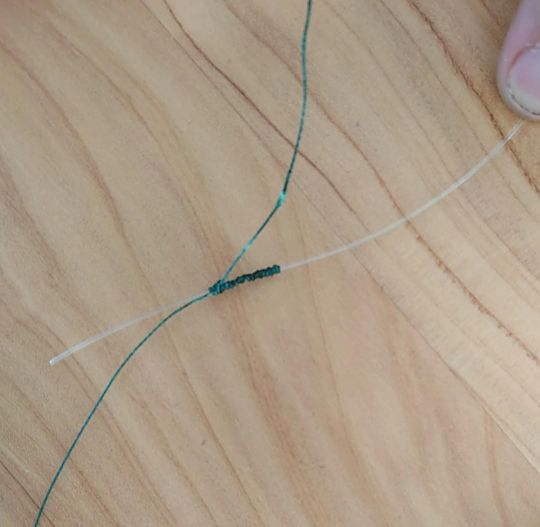
- Step 9: Your knot is now complete. Cut the free strand of braid and the fluorocarbon strand, leaving about 1 mm protruding.
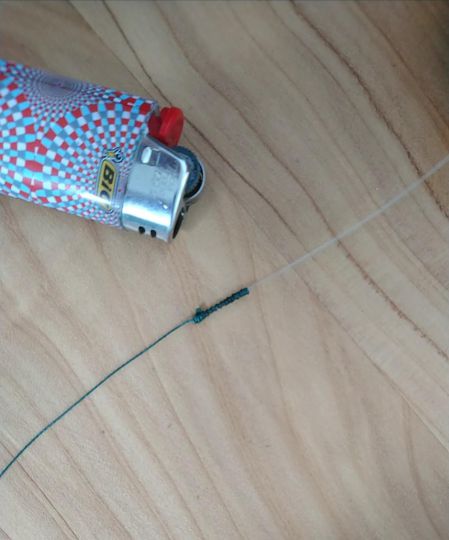
- Step 10: Burn the loose strands of braid and fluorocarbon (taking care not to heat the rest) to form a small ball which acts as a safety stop.

- Final rendering
- Here's the finished knot. Above, the same knot with PE 1.2 braid and 32/100 fluorocarbon
Advantages :
- Passes easily through the rings
- Suitable for all fluorocarbon and braid diameters
- Solid
- Identical to FG, but easier to make
Disadvantages :
- Learning takes a little time
- Longer and trickier to make than the Albright and Peixet (with practice, it still takes less than a minute...)
- More difficult to achieve with small fluorocarbon diameters. In this case, I often prefer the Peixet
